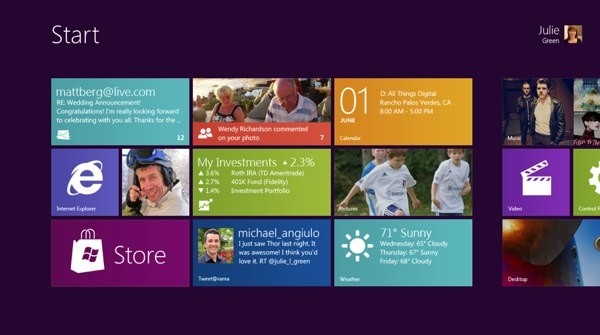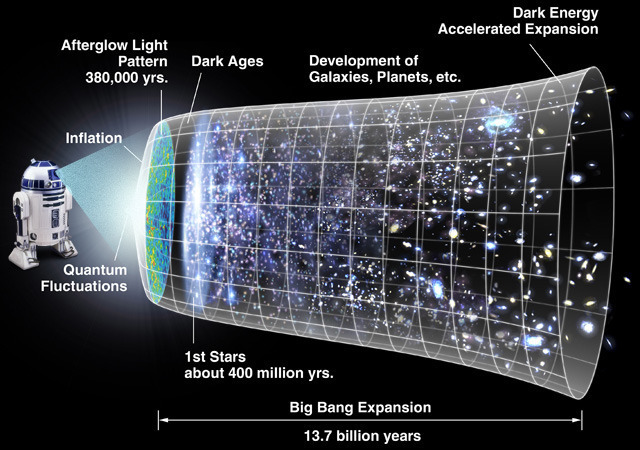Monday, August 01. 2011
Switched On: Desktop divergence
Via Engadget
By Ross Rubin
-----
Last week's Switched On discussed
how Lion's feature set could be perceived differently by new users or
those coming from an iPad versus those who have used Macs for some time,
while a previous Switched On discussed
how Microsoft is preparing for a similar transition in Windows 8. Both
OS X Lion and Windows 8 seek to mix elements of a tablet UI with
elements of a desktop UI or -- putting it another way -- a
finger-friendly touch interface with a mouse-driven interface. If Apple
and Microsoft could wave a wand and magically have all apps adopt
overnight so they could leave a keyboard and mouse behind, they probably
would. Since they can't, though, inconsistency prevails.
Yet, while the OS X-iOS mashup that is Lion
exhibits is share of growing pains, the fall-off effect isn't as
pronounced as it appears it will be for Windows 8. The main reasons for
this are, in order of increasing importance, legacy, hardware, and
Metro.
Legacy. Microsoft has an incredibly strong commitment
to backward compatibility. As long as Microsoft supports older Windows
apps (which will be well into the future), there will be a more
pronounced gap between that old user interface and the new. This will
likely become more of a difference between Microsoft and Apple over
time. For now, however, Apple is also treading lightly, and several of
Lion's user interface changes -- including "natural" scrolling
directions, Dashboard as a space, and the hiding of the hard drive on
the desktop -- can be reversed. Even some of Lion's "full-screen" apps
are only a cursor movement away from revealing their menus.
Hardware. As Apple continues to keep touchscreens off
the Mac, it brings over the look but not the input experience of iPad
apps, relying instead on the precision of a mouse or trackpad.
Therefore, these Mac apps do not have to embrace finger-friendliness. In
contrast, the "tablet" UI of Windows 8 is designed for fingertips and
therefore demands a cleaner break with an interface designed for mice
(although Microsoft preserves pointer control as well so these apps can
be used on PCs without touchscreens).
Metro. A late entrant to the gesture-driven touchscreen
handset wars, Microsoft sought to differentiate Windows Phone 7 with
its panoramic user interface. When Joe Belfiore introduced
Windows Phone 7 at Mobile World Congress in 2010, he repeatedly noted
that "the phone is not a PC." That's an accurate assessment, and perhaps
one worth repeating in light of all the feedback
Microsoft ignored over the years in the design of Pocket PC and Windows
Mobile. It also of couse holds true beond the user interface for design
around context and support of location-based services.
But now that the folks in Redmond have created an enjoyable phone
interface, have things actually changed? Was it true only that the phone
and PC shoud not have the same old Windows interface, or is it also
still true that the PC and phone should not have the same new Windows
Phone interface? Was it the nature of the user interface itself that was
at fault, or the notion of the same user interface across PC and phone
regardless of how good it is?
There is certainly room for more consistency across PCs, tablets and
handsets. However, Microsoft did not just differentiate Windows Phone 7
from iOS and Android, it differentiated it from Windows as well. And that
is the main reason why the shift in context between a classic Windows
app and a "tablet" Windows 8 app seems more striking at this point than
the difference between a classic Mac app and "full screen" Lion app.
Lion's full-screen apps could be the new point of crossover with Windows
8's "tablet" user interface mode. Based on what we've seen on the
handset side, it is certainly possible for developers to write the same
apps for the iPhone and Windows Phone 7, but these are generally simpler
apps (and then there are games, which generally ignore most user
interface conventions anyway).
Apple and Microsoft are both clearly striving for a simpler user
experience, but Microsoft is also trying to adapt its desktop OS to a
new form factor in the process of doing so. The balancing act for both
companies will be making their new combinations of software and hardware
(from partners in the case of Microsoft) embrace a new generation of
users while minimizing alienation for the existing one.
-----
Personal comments:
See also this article
World's first 'printed' plane snaps together and flies
Via CNET
By Eric Mach
-----
English engineers have produced what is believed to be the world's first printed plane. I'm not talking a nice artsy lithograph of the Wright Bros. first flight. This is a complete, flyable aircraft spit out of a 3D printer.

The SULSA began life in something like an inkjet and wound up in the air. (Credit: University of Southhampton)
The SULSA (Southampton University Laser Sintered Aircraft) is an unmanned air vehicle that emerged, layer by layer, from a nylon laser sintering machine that can fabricate plastic or metal objects. In the case of the SULSA, the wings, access hatches, and the rest of the structure of the plane were all printed.
As if that weren't awesome enough, the entire thing snaps together in minutes, no tools or fasteners required. The electric plane has a wingspan of just under 7 feet and a top speed of 100 mph.
Jim Scanlon, one of the project leads at the University of Southhampton, explains in a statement that the technology allows for products to go from conception to reality much quicker and more cheaply.
"The flexibility of the laser-sintering process allows the design team to revisit historical techniques and ideas that would have been prohibitively expensive using conventional manufacturing," Scanlon says. "One of these ideas involves the use of a Geodetic structure... This form of structure is very stiff and lightweight, but very complex. If it was manufactured conventionally it would require a large number of individually tailored parts that would have to be bonded or fastened at great expense."
So apparently when it comes to 3D printing, the sky is no longer the limit. Let's just make sure someone double-checks the toner levels before we start printing the next international space station.
-----
Personal comments:
Industrial production tools back to people?
Fab@Home project
Adobe dives into HTML with new Edge software
Via CNET
By Stephen Shankland
-----

Adobe Systems has dipped its toes in the HTML5 pool, but starting today it's taking the plunge with the public preview release of software called Edge.
For years, the company's answer to doing fancy things on the Web was Flash Player, a browser plug-in installed nearly universally on computers for its ability to play animated games, stream video, and level the differences among browsers.
But allies including Opera, Mozilla, Apple, Google, and eventually even Microsoft began to advance what could be done with Web standards. The three big ones here are HTML (Hypertext Markup Language for describing Web pages), CSS (Cascading Style Sheets for formatting and now animation effects), and JavaScript (the programming language used for Web apps).
Notably, these new standards worked on new smartphones when Flash either wasn't available, ran sluggishly, or was barred outright in the case of iPhones and iPads. Adobe is working hard to keep Flash relevant for three big areas--gaming, advanced online video, and business apps--but with Edge, it's got a better answer to critics who say Adobe is living in the past.
"What we've seen happening is HTML is getting much richer. We're seeing more workflow previously reserved for Flash being done with Web standards," said Devin Fernandez, product manager of Adobe's Web Pro group.

A look at the Adobe Edge interface.
(Credit: Adobe Systems)The public preview release is just the beginning for Edge. It lets people add animation effects to Web pages, chiefly with CSS controlled by JavaScript. For example, when a person loads a Web page designed with Edge, text and graphics elements gradually slide into view.
It all can be done today with programming experience, but Adobe aims to make it easier for the design crowd used to controlling how events take place by using a timeline that triggers various actions.
As new versions arrive, more features will be added, and Adobe plans to begin selling the finished version of Edge in 2012.
"[For] the first public preview release, we focused on animation," Fernandez said. "Over the public preview period, we'll be adding additional functionality. We'll be incorporating feedback from the community, taking those requests into account."
The Edge preview product now is available at the Adobe Labs site. Adobe showed an early look at Edge in June.
What exactly is next in the pipeline? Adobe has a number of features in mind, including the addition of video and audio elements alongside the SVG, PNG, GIF, and JPEG graphics it can handle now.

Some of the features Adobe has in mind before a planned 2012 release of Edge. (Credit: Adobe Systems)
Other items on the to-do list:
• More shapes than just rectangles and rounded-corner rectangles.
• Actions that are triggered by events.
• Support for Canvas, an HTML5 standard for 2D drawing surface for graphics, in particular combined with SVG animation. (Note that Adobe began the SVG effort while before it acquired Macromedia, whose Flash technology was a rival to SVG.)
"We still have a lot of features we have not implemented," said Mark Anders, an Adobe fellow working on Edge.
The software integrates with Dreamweaver, Adobe's Web design software package, or other Web tools. It integrates its actions with the Web page so that Edge designers can marry their additions with the other programming work.
The software itself has a WebKit-based browser whose window is prominent in the center of the user interface. A timeline below lets designers set events, copy and paste effects to different objects, and make other scheduling changes.
Adobe, probably not happy with being a punching bag for Apple fans who disliked Flash, seems eager to be able to show off Edge to counter critics' complaints. The company will have to overcome skepticism and educate the market that it's serious, but real software beats keynote comments any day.
Anders, who before Edge worked on Flash programming tools and led work on Microsoft's .Net Framework, is embracing the new ethos.
"In the the last 15 years, if you looked at a Web page and saw this, you would say that is Flash because Flash is the only thing that can do that. That is not true today," Anders said. "You can use HTML and the new capabilities of CSS to do this really amazing stuff."
How an argument with Hawking suggested the Universe is a hologram
The proponents of string theory seem to think they can provide a more elegant description of the Universe by adding additional dimensions. But some other theoreticians think they've found a way to view the Universe as having one less dimension. The work sprung out of a long argument with Stephen Hawking about the nature of black holes, which was eventually solved by the realization that the event horizon could act as a hologram, preserving information about the material that's gotten sucked inside. The same sort of math, it turns out, can actually describe any point in the Universe, meaning that the entire content Universe can be viewed as a giant hologram, one that resides on the surface of whatever two-dimensional shape will enclose it.
That was the premise of panel at this summer's World Science Festival, which described how the idea developed, how it might apply to the Universe as a whole, and how they were involved in its development.
The whole argument started when Stephen Hawking attempted to describe what happens to matter during its lifetime in a balck hole. He suggested that, from the perspective of quantum mechanics, the information about the quantum state of a particle that enters a black hole goes with it. This isn't a problem until the black hole starts to boil away through what's now called Hawking radiation, which creates a separate particle outside the event horizon while destroying one inside. This process ensures that the matter that escapes the black hole has no connection to the quantum state of the material that had gotten sucked in. As a result, information is destroyed. And that causes a problem, as the panel described.
As far as quantum mechanics is concerned, information about states is never destroyed. This isn't just an observation; according to panelist Leonard Susskind, destroying information creates paradoxes that, although apparently minor, will gradually propagate and eventually cause inconsistencies in just about everything we think we understand. As panelist Leonard Susskind put it, "all we know about physics would fall apart if information is lost."
Unfortunately, that's precisely what Hawking suggested was happening. "Hawking used quantum theory to derive a result that was at odds with quantum theory," as Nobel Laureate Gerard t'Hooft described the situation. Still, that wasn't all bad; it created a paradox and "Paradoxes make physicists happy."
"It was very hard to see what was wrong with what he was saying," Susskind said, "and even harder to get Hawking to see what was wrong."
The arguments apparently got very heated. Herman Verlinde, another physicist on the panel, described how there would often be silences when it was clear that Hawking had some thoughts on whatever was under discussion; these often ended when Hawking said "rubbish." "When Hawking says 'rubbish,'" he said, "you've lost the argument."
t'Hooft described how the disagreement eventually got worked out. It's possible, he said, to figure out how much information has gotten drawn in to the black hole. Once you do that, you can see that the total amount can be related to the surface area of the event horizon, which suggested where the information could be stored. But since the event horizon is a two-dimensional surface, the information couldn't be stored in regular matter; instead, the event horizon forms a hologram that holds the information as matter passes through it. When that matter passes back out as Hawking radiation, the information is restored.
Susskind described just how counterintuitive this is. The holograms we're familiar with store an interference pattern that only becomes information we can interpret once light passes through them. On a micro-scale, related bits of information may be scattered far apart, and it's impossible to figure out what bit encodes what. And, when it comes to the event horizon, the bits are vanishingly small, on the level of the Planck scale (1.6 x 10-35 meters). These bits are so small, as t'Hooft noted, that you can store a staggering amount of information in a reasonable amount of space—enough to describe all the information that's been sucked into a black hole.
The price, as Susskind noted, was that the information is "hopelessly scrambled" when you do so.
From a black hole to the Universe
Berkeley's Raphael Bousso was on hand to describe how these ideas were expanded out to encompass the Universe as a whole. As he put it, the math that describes how much information a surface can store works just as well if you get rid of the black hole and event horizon. (This shouldn't be a huge surprise, given that most of the Universe is far less dense than the area inside a black hole.) Any surface that encloses an area of space in this Universe has sufficient capacity to describe its contents. The math, he said, works so well that "it seems like a conspiracy."
To him, at least. Verlinde pointed out that things in the Universe scale with volume, so it's counterintuitive that we should expect its representation to them to scale with a surface area. That counterintuitiveness, he thinks, is one of the reasons that the idea has had a hard time being accepted by many.
When it comes to the basic idea—the Universe can be described using a hologram—the panel was pretty much uniform, and Susskind clearly felt there was a consensus in its favor. But, he noted, as soon as you stepped beyond the basics, everybody had their own ideas, and those started coming out as the panel went along. Bousso, for example, felt that the holographic principle was "your ticket to quantum gravity." Objects are all attracted via gravity in the same way, he said, and the holographic principle might provide an avenue for understanding why (if he had an idea about how, though, he didn't share it with the audience). Verlinde seemed to agree, suggesting that, when you get to objects that are close to the Planck scale, gravity is simply an emergent property.
But t'Hooft seemed to be hoping that the holographic principle could solve a lot more than the quantum nature of gravity—to him, it suggested there might be something underlying quantum mechanics. For him, the holographic principle was a bit of an enigma, since disturbances happen in three dimensions, but propagate to a scrambled two-dimensional representation, all while obeying the Universe's speed limit (that of light). For him, this suggests there's something underneath it all, and he'd like to see it be something that's a bit more causal than the probabilistic world of quantum mechanics; he's hoping that a deterministic world exists somewhere near the Planck scale. Nobody else on the panel seemed to be all that excited about the prospect, though.
What was missing from the discussion was an attempt to tackle one of the issues that plagues string theory: the math may all work out and it could provide a convenient way of looking at the world, but is it actually related to anything in the actual, physical Universe? Nobody even attempted to tackle that question. Still, the panel did a good job of describing how something that started as an attempt to handle a special case—the loss of matter into a black hole—could provide a new way of looking at the Universe. And, in the process, how people could eventually convince Stephen Hawking he got one wrong.
Quicksearch
Popular Entries
- The great Ars Android interface shootout (130673)
- Norton cyber crime study offers striking revenue loss statistics (100885)
- MeCam $49 flying camera concept follows you around, streams video to your phone (99678)
- Norton cyber crime study offers striking revenue loss statistics (57114)
- The PC inside your phone: A guide to the system-on-a-chip (56964)


